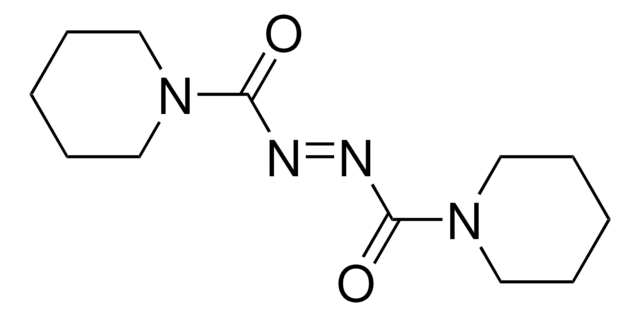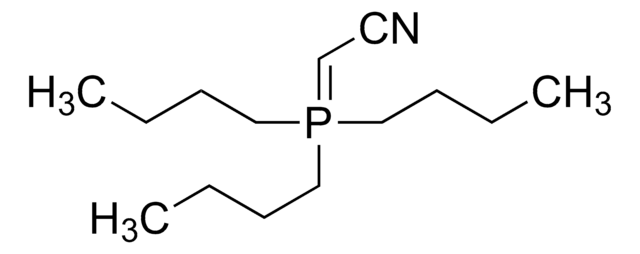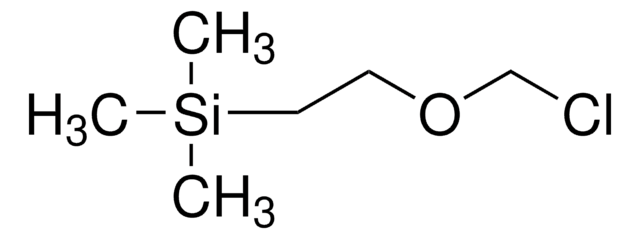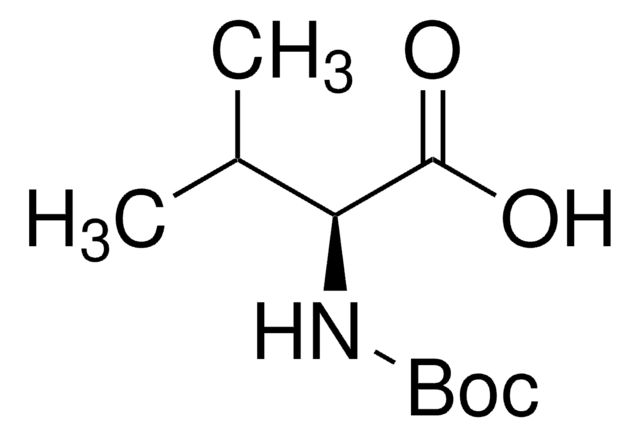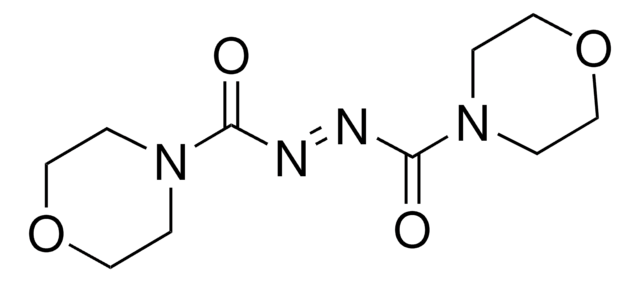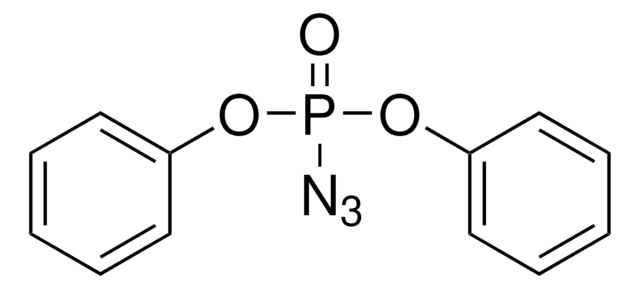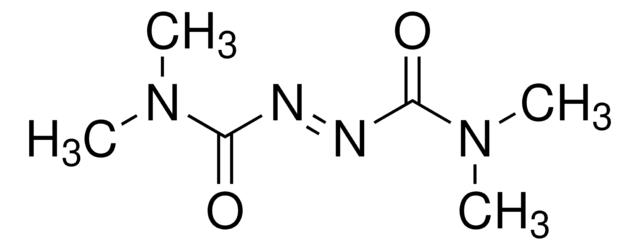680850
Di-(4-chlorobenzyl)azodicarboxylate
97%
Sinónimos:
Bis-(4-chlorobenzyl)azodicarboxylate, DCAD
Iniciar sesiónpara Ver la Fijación de precios por contrato y de la organización
About This Item
Fórmula empírica (notación de Hill):
C16H12Cl2N2O4
Número de CAS:
Peso molecular:
367.18
Número MDL:
Código UNSPSC:
12352101
ID de la sustancia en PubChem:
NACRES:
NA.22
Productos recomendados
Análisis
97%
formulario
solid
mp
108-112 °C
grupo funcional
azo
chloro
cadena SMILES
O=C(/N=N\C(OCC1=CC=C(Cl)C=C1)=O)OCC2=CC=C(Cl)C=C2
InChI
1S/C16H12Cl2N2O4/c17-13-5-1-11(2-6-13)9-23-15(21)19-20-16(22)24-10-12-3-7-14(18)8-4-12/h1-8H,9-10H2/b20-19-
Clave InChI
UIFGGABIJBWRMG-VXPUYCOJSA-N
Descripción general
Learn More at the Professor and Product Portal of Professor Bruce Lipshutz.
Aplicación
Reactant for preparation of:
- Amino thioesters via guanidine-catalyzed biomimetic enantioselective decarboxylative Mannich and amination reactions of malonic acid half thioesters
- Hydroacylation reaction of aldehydes in Ionic liquid (IL) medium
- DCAD (di-p-chlorobenzyl azodicarboxylate) for Mitsunobu coupling reactions
Di-(4-chlorobenzyl)azodicarboxylate (DCAD) is a novel, stable, solid alternative to DEAD and DIAD for a variety of Mitsunobu couplings giving a readily separable hydrazine byproduct that can be recycled.
Palabra de señalización
Warning
Frases de peligro
Consejos de prudencia
Clasificaciones de peligro
Skin Sens. 1
Código de clase de almacenamiento
11 - Combustible Solids
Clase de riesgo para el agua (WGK)
WGK 3
Punto de inflamabilidad (°F)
Not applicable
Punto de inflamabilidad (°C)
Not applicable
Elija entre una de las versiones más recientes:
¿Ya tiene este producto?
Encuentre la documentación para los productos que ha comprado recientemente en la Biblioteca de documentos.
Los clientes también vieron
T Amirabadi Farahani et al.
Journal of dairy science, 100(8), 6199-6217 (2017-05-30)
This experiment was conducted to compare conventional (CON; 21 d) and shortened (SH; 10 d) close-up period, and evaluate the effect of shortened close-up period combined with feeding different metabolizable protein (MP) levels on dry matter (DM) intake, metabolic status
R Zimpel et al.
Journal of dairy science, 101(9), 8461-8475 (2018-07-05)
The objective was to determine if the reduction in dry matter (DM) intake of acidogenic diets is mediated by inclusion of acidogenic products, content of salts containing Cl, or changes in acid-base status. The hypothesis was that a decrease in
J E P Santos et al.
Journal of dairy science, 102(3), 2134-2154 (2019-01-08)
The objectives were to use meta-analytic methods to determine the effects of changes in dietary cation-anion difference (DCAD) prepartum on productive performance and health of dairy cows. The literature was systematically reviewed, searching randomized experiments with transition cows that manipulated
Bruce H Lipshutz et al.
Organic letters, 8(22), 5069-5072 (2006-10-20)
Di-p-chlorobenzyl azodicarboxylate (DCAD) is introduced as a novel, stable, solid alternative to DEAD and DIAD for a variety of Mitsunobu couplings. DCAD/Ph(3)P-mediated reactions in CH(2)Cl(2) generate a readily separable hydrazine byproduct. [reaction: see text]
Vivian F Su et al.
BMC developmental biology, 7, 43-43 (2007-05-09)
The Hedgehog (Hh) family of secreted growth factors are morphogens that act in development to direct growth and patterning. Mutations in human Hh and other Hh pathway components have been linked to human diseases. Analysis of Hh distribution during development
Nuestro equipo de científicos tiene experiencia en todas las áreas de investigación: Ciencias de la vida, Ciencia de los materiales, Síntesis química, Cromatografía, Analítica y muchas otras.
Póngase en contacto con el Servicio técnico

